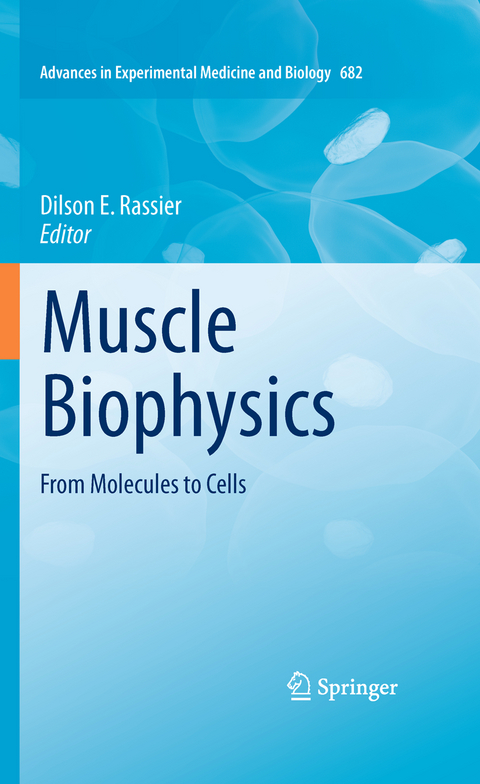
Muscle Biophysics
Springer-Verlag New York Inc.
978-1-4614-2663-9 (ISBN)
Striated Muscles: From Molecules to Cells.- Contractile Performance of Striated Muscle.- Energy Economy in the Actomyosin Interaction: Lessons from Simple Models.- A Strain-Dependency of Myosin Off-Rate Must Be Sensitive to Frequency to Predict the B-Process of Sinusoidal Analysis.- Electron Microscopic Visualization of the Cross-Bridge Movement Coupled with ATP Hydrolysis in Muscle Thick Filaments in Aqueous Solution, Reminiscences and Future Prospects.- Role of Titin in Skeletal Muscle Function and Disease.- Contractile Characteristics of Sarcomeres Arranged in Series or Mechanically Isolated from Myofibrils.- The Force–Length Relationship of Mechanically Isolated Sarcomeres.- Extraction and Replacement of the Tropomyosin–Troponin Complex in Isolated Myofibrils.- Stretch and Shortening of Skeletal Muscles Activated Along the Ascending Limb of the Force–Length Relation.- Cross-Bridge Properties in Single Intact Frog Fibers Studied by Fast Stretches.- Crossbridge and Non-crossbridge Contributions to Force in Shortening and Lengthening Muscle.- Short-Range Mechanical Properties of Skeletal and Cardiac Muscles.- Crossbridge Mechanism(s) Examined by Temperature Perturbation Studies on Muscle.- Efficiency of Cross-Bridges and Mitochondria in Mouse Cardiac Muscle.- Mechanisms of Skeletal Muscle Weakness.- Stretch-Induced Membrane Damage in Muscle: Comparison of Wild-Type and mdx Mice.- Cellular and Whole Muscle Studies of Activity Dependent Potentiation.
| Reihe/Serie | Advances in Experimental Medicine and Biology ; 682 |
|---|---|
| Zusatzinfo | XIV, 354 p. |
| Verlagsort | New York, NY |
| Sprache | englisch |
| Maße | 155 x 235 mm |
| Themenwelt | Medizin / Pharmazie |
| Naturwissenschaften ► Biologie ► Biochemie | |
| Naturwissenschaften ► Biologie ► Zellbiologie | |
| Naturwissenschaften ► Biologie ► Zoologie | |
| Naturwissenschaften ► Physik / Astronomie ► Angewandte Physik | |
| ISBN-10 | 1-4614-2663-4 / 1461426634 |
| ISBN-13 | 978-1-4614-2663-9 / 9781461426639 |
| Zustand | Neuware |
| Haben Sie eine Frage zum Produkt? |
aus dem Bereich


